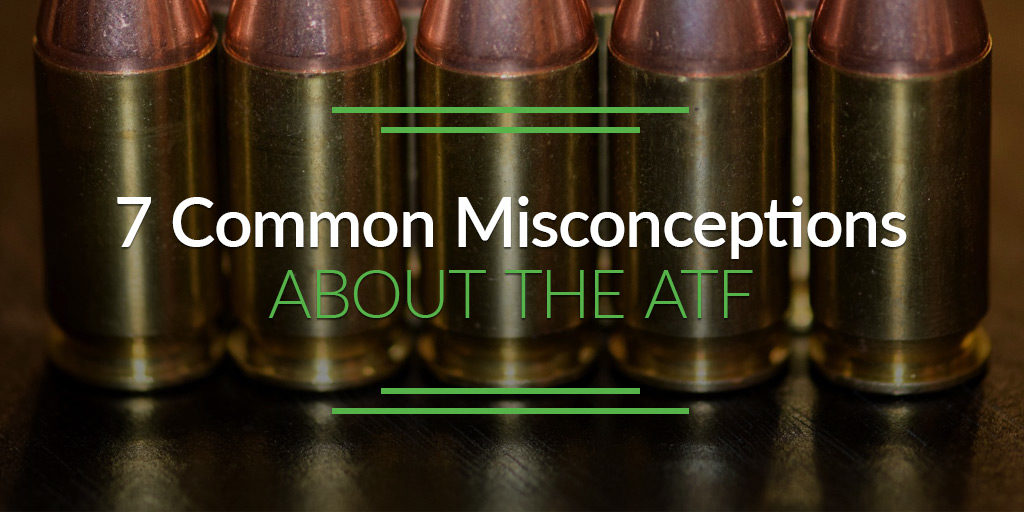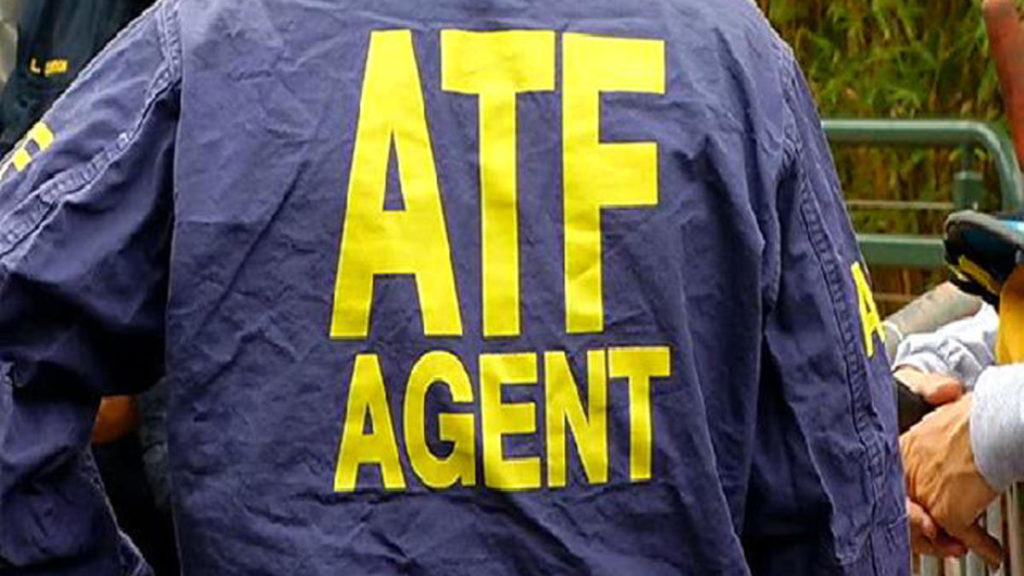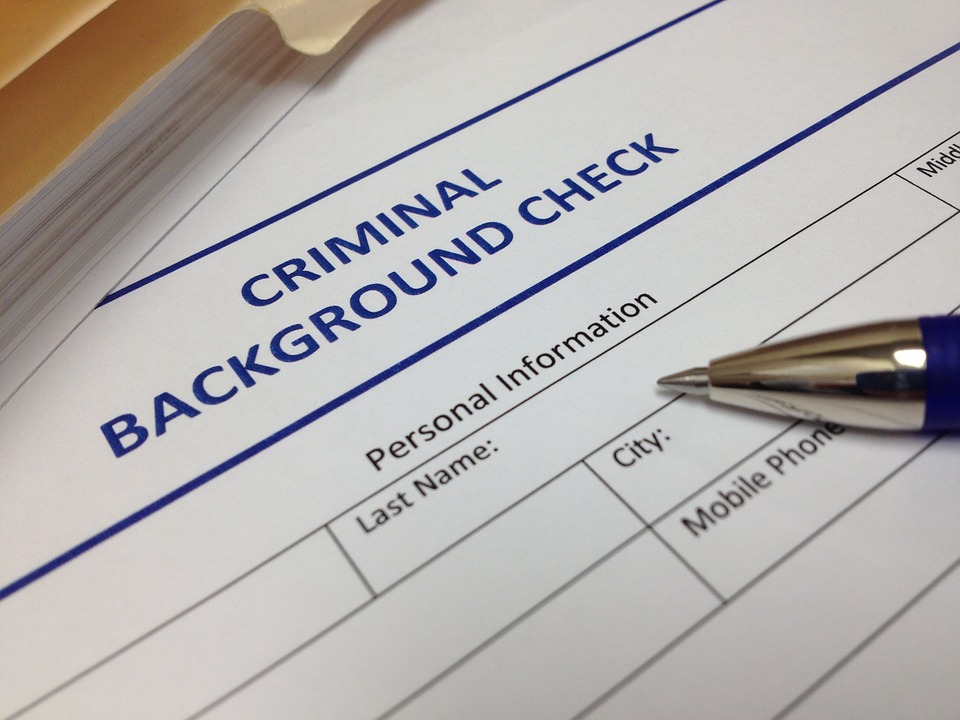
There is a lot of bad information out there about the ATF and how it treats firearms sellers. This article exposes those misconceptions with the truth.
The firearms industry is a centerpiece for national controversy. Opinions are hot. Those who make their living in the industry are, understandably, concerned about how the political climate will affect their livelihood.
Unfortunately, this concern has bred misconceptions about the industry and its regulations enforcer, the Bureau of Alcohol, Tobacco, Firearms and Explosives. The most suspicious fear that the ATF will burst into their stores and homes, demanding documents and access to personal spaces. They worry about seized inventory, arrested citizens, and other unconstitutional behavior.
Today, I’m going to clear up some of the big myths that are constantly repeated.
Myth 1: The ATF creates gun laws.

The ATF is older than most people think. It was established in 1886 as an arm of the Department of the Treasury. In 1927, it was transferred to the Justice Department, in 1930 it served briefly under the FBI, and in 1933 it became a part of the IRS.
With the Gun Control ACT of 1968, the bureau took its current name. The Homeland Security Act of 2002 moved the bureau back under the Justice Department’s purview, as the agency’s mission had become less about taxation and more about addressing firearms used in violent crimes.
Congress makes laws that give the ATF power. The ATF does not create legislation. The ATF gets most of its authority from four pieces of legislation passed by Congress.
- National Firearms Act (1934) – This legislation imposed taxes on the sale and transfer of firearms. The purpose of this legislation was to collect tax revenue and reduce transactions of “NFA firearms,” which are certain types of firearms and accessories that play a key role in violent crime. It also required all sales to be registered with the Secretary of the Treasury.
- Gun Control Act (1968) – This legislation repealed the registration requirement of the NFA (as it was found unconstitutional). It primarily focuses on prohibiting the sale or transfer of firearms except by licensed dealers and manufacturers.
- Firearm Owner’s Protection Act (1986) – This legislation opened some restrictions on firearms sales and reduced the ATF’s authority a bit (including the once-a-year inspection limit).
- Brady Handgun Violence Prevention Act (1993) – This legislation mandates federal background checks performed on anyone who wants to buy a firearm, as well as a five-day waiting period. It also defines some prohibited persons who aren’t allowed to sell, transfer, or possess firearms.
However, the ATF can create administrative law. Essentially, Congress gives certain agencies the authority to create regulations that have the effect of law. Even though these regulations are established and enforced by the agency, they legally stem from Congress.
At any time, Congress can expand or limit the ATF’s authority, or disband the agency altogether.
Myth 2: The ATF wants to take our guns.
The ATF is a law enforcement body designed to oversee the sale and transfer of firearms. (They do other things as well, but those don’t apply here.) According to their website, their “investigative priorities focus on armed violent offenders and career criminals, narcotics traffickers, narco-terrorists, violent gangs, and domestic and international arms traffickers.” They aren’t seeking to confiscate firearms from law-abiding citizens.
In fact, the ATF supports lawful firearm ownership by helping FFLs work toward compliance, rather than imposing swift and harsh penalties. Other than revoking your license or denying its renewal, the ATF doesn’t have many tools to punish a firearms dealer for mistakes. They can write reports, issue warnings, and drag you to a conference—but that’s it.
Myth 3: The ATF is watching your every move.
Even though the bureau investigates firearms dealers, they certainly aren’t monitoring every sale. They aren’t hiding in an unmarked van on your street, listening to your phone calls. As long as you aren’t engaging in criminal activity, the ATF likely never sees your name (or your business’ name) until your routine inspection.
Even though the ATF investigates firearms dealers, they certainly aren’t monitoring every sale.
That inspection comes with rules. The ATF can only inspect you once a year without a warrant. In 2013, there were 77,000 FFLs, but only 13,100 were inspected. That’s only 20%. At that rate, you can expect an inspection every five years, but many businesses who are more than 20 years old report they’ve only been inspected once or twice.
The scope of the inspection is limited, as well. They can’t rummage through documents that don’t pertain to gun sales. They can’t seize your property or arrest you on site.
As long as you’re following the law and avoiding associations with criminal activity, you’ll have very little contact with the ATF. (But that doesn’t mean you can be careless with their rules.)
Myth 4: FFL paperwork mistakes could send you to prison.
All industries are subject to some type of regulatory body.
The paperwork you’re required to handle isn’t overly complicated, but you can’t prepare it absentmindedly. The necessary documents are essentially a register: you record new inventory, sales, and customer information.
Instead of doing it all by hand, it’s advisable to use a bound book software for FFLs that simplifies your workflow and promotes compliance. Just make sure you’re using software that’s compliant. There’s a lot of junk software available.
Yes, the ATF takes your compliance seriously. As an FFL holder, you’re the only one who can trace a serial number to the buyer. The ATF needs to make sure your records are accurate in case a law enforcement agency ever needs to use that data to conduct a criminal investigation.
But that doesn’t mean the bureau wants to develop an antagonistic relationship with you or any FFL holder. During their inspections, they’re looking for compliance mistakes. They aren’t looking to penalize or arrest you. They want to educate you so the mistakes don’t happen again. They’ll show you what you did incorrectly, how to correct the mistake (if that’s possible), and how to do it properly in the future.
That said, if you are deliberately preparing your documents falsely, you could end up in serious trouble.
Myth 5: The ATF will inspect your personal inventory.

Photo credit: Michael Saechang/Flickr
There’s a misconception that ATF agents are permitted to inspect and catalog your personal firearms collection if you have a federal firearms license. Just like a private citizen, the ATF doesn’t have the power to investigate your personal property without a warrant. However, you are required to make a clear division between what is yours and what’s for sale.
The best way to do this is by keeping your personal property in a separate location. That may be at home or in a back room. Another method is to individually label each personal firearm as “not for sale” with a sticker or tag.
If you add to your collection, record the transaction in your bound book like you would for any customer. Make a note that you’ve moved it into your personal collection. (More documentation is always a good thing!) The ATF requires FFL holders to have a personal disposition record that records their personal firearms.
Keep in mind that if you sell the firearm within a year of moving it into your personal collection, you must re-enter it in your bound book and transfer it as business inventory. If you wait a year, you can sell them from your collection without a Form 4473 or background check.
Myth 6: The ATF conducts background checks.

There’s not much to say about this misconception except that it is false.
Federal background checks are performed by the National Instant Criminal Background Check System (NICS). This system is maintained by the FBI. It’s used to determine if a person is eligible to purchase a firearm.
The check can usually make a determination within minutes, but sometimes there is a delay. If the FBI hasn’t responded within three business days, the sale can proceed without the check’s determination.
Myth 7: The ATF keeps a national gun registry.
The Firearm Owners’ Protection Act makes it expressly illegal for the government (federal or state) to create a registry of firearm owners.
Unlike our favorite crime dramas, law enforcement personnel have no simple method of discovering the owner of a firearm. If a police officer or federal agent wants to track a specific gun, they have to bring the serial number to the manufacturer, who will lead them to the importer or distributor. This party will lead them to the storefront dealer, who will lead them to the buyer. It’s no guarantee the buyer will have the gun anyway, since private sales aren’t tracked.
Think about it like this: if the ATF had a registry of gun owners, why would they spend enormous resources checking bound books for compliance? With a simple database, the ATF could have each vendor input the information electronically. They would only have to respond to dealers who failed to provide accurate and thorough information.
Instead, the ATF sends investigators on tedious inspections of written paperwork and antiquated ledger books. If they had a registry, that wouldn’t be necessary. But since they don’t, the only way to evaluate an FFL’s compliance is to show up at their door and rummage through paperwork.
Going Forward
With those myths busted, I hope you can relax and spend less time worrying about the ATF’s involvement in your business. If you comply with regulations and cooperate with the rare inspection, you’ll have little interaction with the ATF.
